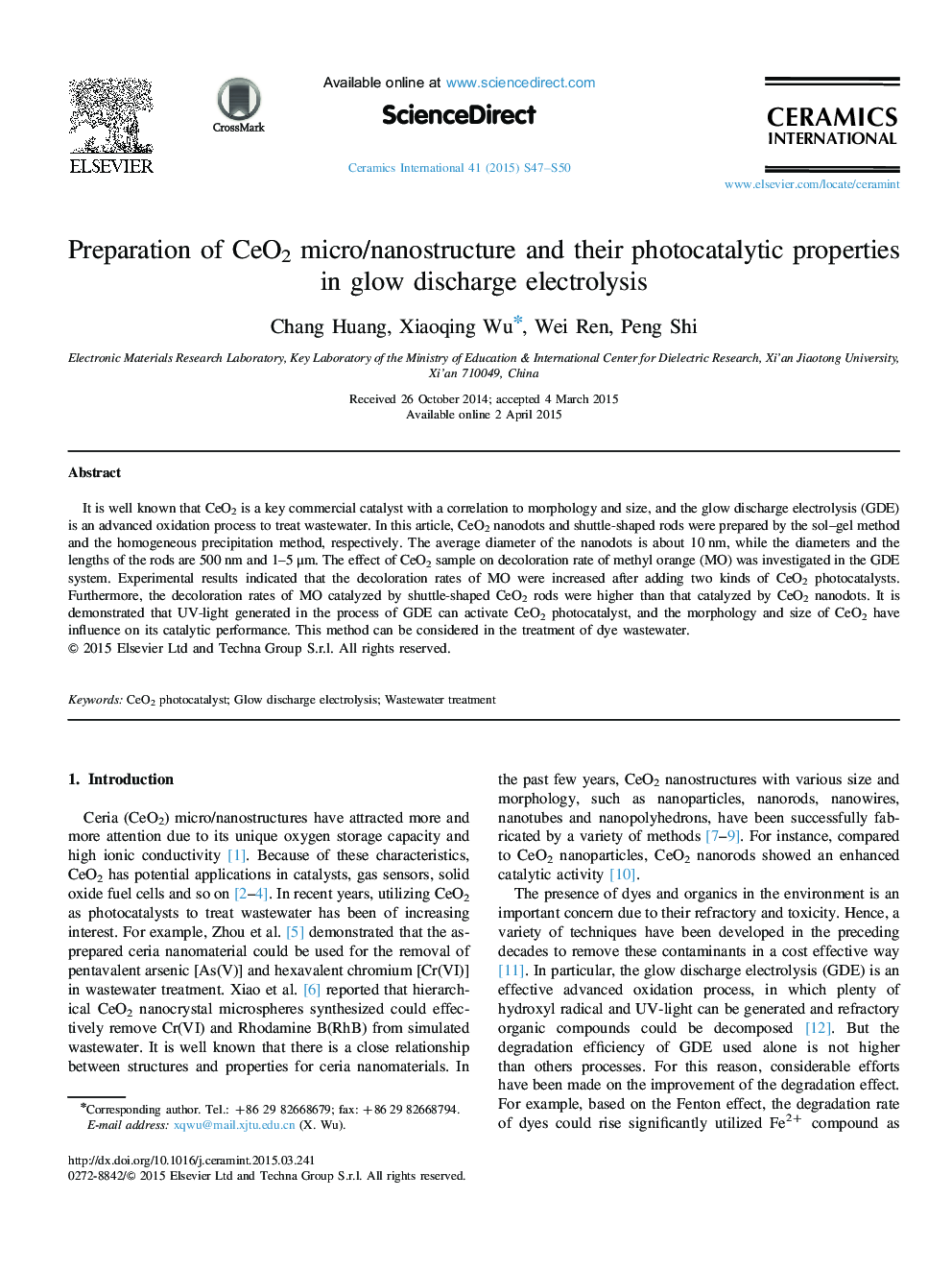| Article ID | Journal | Published Year | Pages | File Type |
|---|---|---|---|---|
| 1460890 | Ceramics International | 2015 | 4 Pages |
It is well known that CeO2 is a key commercial catalyst with a correlation to morphology and size, and the glow discharge electrolysis (GDE) is an advanced oxidation process to treat wastewater. In this article, CeO2 nanodots and shuttle-shaped rods were prepared by the sol–gel method and the homogeneous precipitation method, respectively. The average diameter of the nanodots is about 10 nm, while the diameters and the lengths of the rods are 500 nm and 1–5 μm. The effect of CeO2 sample on decoloration rate of methyl orange (MO) was investigated in the GDE system. Experimental results indicated that the decoloration rates of MO were increased after adding two kinds of CeO2 photocatalysts. Furthermore, the decoloration rates of MO catalyzed by shuttle-shaped CeO2 rods were higher than that catalyzed by CeO2 nanodots. It is demonstrated that UV-light generated in the process of GDE can activate CeO2 photocatalyst, and the morphology and size of CeO2 have influence on its catalytic performance. This method can be considered in the treatment of dye wastewater.
